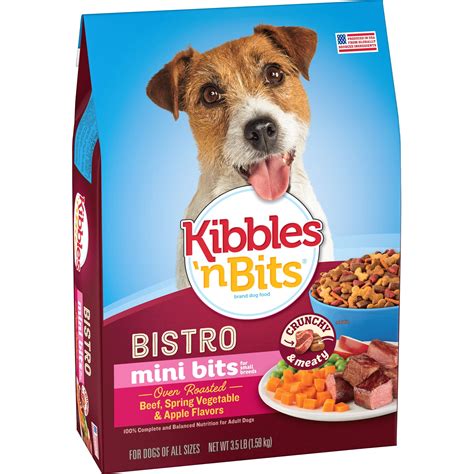The Ultimate Guide to Kibble: Everything You Need to Know
Introduction
Kibble, also known as dry food, is a staple diet for many cats and dogs. It's convenient, affordable, and provides essential nutrients. However, choosing the right kibble for your pet can be overwhelming. This comprehensive guide will explore everything you need to know about kibble, from its benefits to its potential drawbacks.
Benefits of Kibble
-
Convenience: Kibble is easy to store, transport, and serve. It doesn't require refrigeration and can be left out for several days.

-
Affordability: Kibble is generally more affordable than wet food or homemade diets.
-
Dental Health: The mechanical action of chewing kibble can help remove plaque and tartar from teeth.
-
Nutrient Density: Kibble is typically fortified with vitamins, minerals, and other essential nutrients.

-
Variety: Kibble is available in a wide range of flavors, textures, and formulations to meet the needs of different pets.

Potential Drawbacks of Kibble
-
Low Moisture Content: Kibble contains less moisture than wet food, which can lead to dehydration if pets don't drink enough water.
-
Carbohydrate Dependency: Most kibbles contain high levels of carbohydrates, which can be difficult for some pets to digest.
-
Additives: Some kibbles contain artificial flavors, colors, and preservatives, which can be harmful to pets.

-
Allergies: Certain ingredients in kibble can trigger allergies in some pets.
-
Digestibility: The quality and type of ingredients used in kibble can affect its digestibility.
Choosing the Right Kibble for Your Pet
The best kibble for your pet will depend on their age, breed, health condition, and activity level. Consider the following factors when choosing a kibble:
-
Age: Puppies and kittens need kibble designed specifically for their nutritional needs.
-
Breed: Certain breeds, such as giant breeds, may require kibble with higher levels of calcium and glucosamine.
-
Health Condition: Pets with allergies, digestive issues, or other health conditions may need a specialized kibble.
-
Activity Level: Active pets may need kibble with higher levels of protein and fat.
Ingredients to Look for in Kibble
Not all kibbles are created equal. When reading the ingredients list, look for:
-
Whole Meat Ingredients: Real meat, such as chicken, beef, or fish, should be the first ingredient.
-
Whole Grains: Whole grains, such as brown rice or oats, provide carbohydrates and fiber.
-
Fruits and Vegetables: Fruits and vegetables provide vitamins, minerals, and antioxidants.
-
Healthy Fats: Healthy fats, such as omega-3 and omega-6 fatty acids, support skin and coat health.
-
Avoid Artificial Ingredients: Artificial flavors, colors, and preservatives can be harmful to pets.
Tips for Feeding Your Pet Kibble
-
Follow the Feeding Guidelines: Overfeeding can lead to obesity and other health problems. Follow the feeding guidelines on the kibble bag.
-
Mix Kibble with Water: Adding a little water to kibble can increase its moisture content.
-
Monitor Your Pet's Weight: Weigh your pet regularly to make sure they are maintaining a healthy weight.
-
Provide Fresh Water: Always provide your pet with access to fresh, clean water.
Step-by-Step Guide to Choosing Kibble
- Determine your pet's age, breed, health condition, and activity level.
- Research different kibble brands and formulations.
- Read the ingredients list carefully and avoid kibbles with artificial ingredients.
- Start by feeding your pet a small amount of the new kibble and gradually increase the amount over several days.
- Monitor your pet's weight and health and adjust the feeding schedule as needed.
FAQs About Kibble
-
Is kibble bad for my pet? Kibble can be a nutritious and convenient diet for pets, but it's important to choose a high-quality kibble that meets your pet's individual needs.
-
Can I feed my pet kibble and wet food? Yes, you can feed your pet a combination of kibble and wet food. However, it's important to adjust the feeding amounts to ensure your pet is not overfed.
-
How often should I feed my pet kibble? The frequency of feeding will depend on your pet's age, size, and activity level. Generally, adult dogs should be fed twice a day, while adult cats can be fed once or twice a day.
-
Can I feed my puppy or kitten kibble? Yes, there are kibbles specifically designed for puppies and kittens that provide the nutrients they need for growth and development.
-
What are the best kibble brands for dogs? Some of the best kibble brands for dogs include Blue Buffalo, Purina Pro Plan, and Royal Canin.
-
What are the best kibble brands for cats? Some of the best kibble brands for cats include Hill's Science Diet, Purina One, and Iams.
Call to Action
Choosing the right kibble for your pet is essential for their health and well-being. Follow the tips and advice provided in this guide to make an informed decision about your pet's diet.
